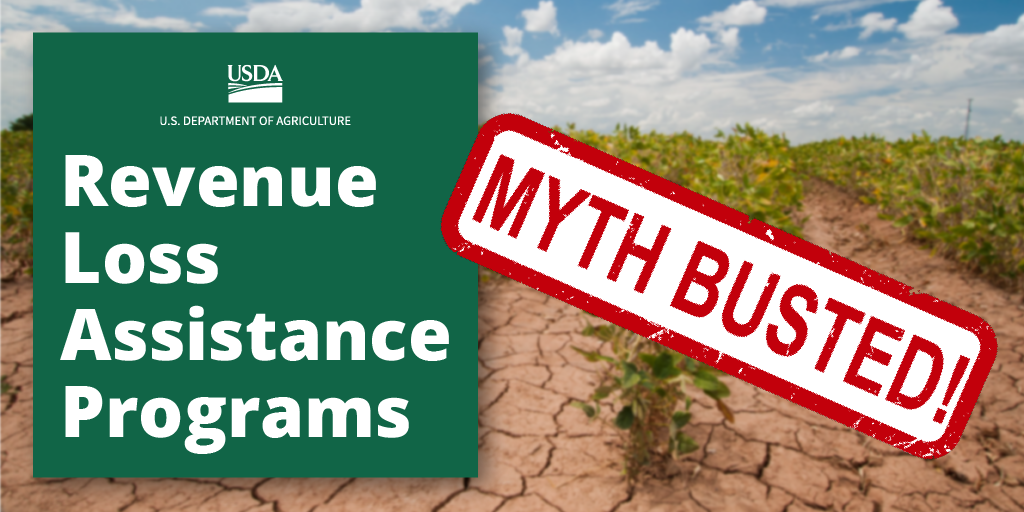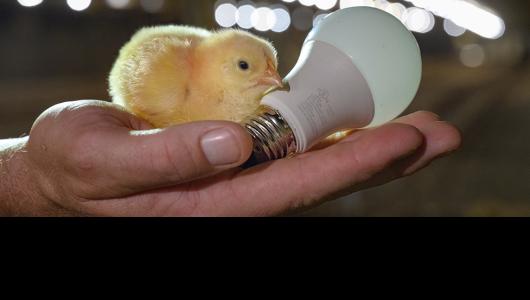In January, we announced two new programs designed to assist producers who experienced revenue losses from 2020 and 2021 natural disasters or the COVID-19 pandemic. These programs are revenue-based and feel a little different from our regular programs, but the goal is to better support farmers.
Both the Emergency Relief Program (ERP) Phase Two and the Pandemic Assistance Revenue Program (PARP) offer a holistic approach to disaster assistance and provide economic support for producers who bear the financial brunt of circumstances beyond their control.
With the rollout of any new program, there is a learning curve for producers and employees alike. ERP Phase Two and PARP are no exception. To encourage producer participation in these valuable programs, I’m going to do my best to debunk some myths and misconceptions surrounding ERP Phase Two and PARP.
The deadline for PARP and ERP Phase Two has been extended to July 14, 2023. With the deadline quickly approaching, it’s important that we clear up confusion about how to apply, what documents are required for participation, insurance requirements and related misinformation making its way across the countryside.

Now, let’s do some myth-busting.
Myth #1 – You need to submit a completed tax return to FSA to apply for ERP Phase Two or PARP.
While these programs are based on revenue losses, you do not need a tax return, completed or otherwise, to apply for assistance. In fact, we have an ERP Phase 2 tool and PARP tool that walk you through the process step by step.
We understand that you may have questions for your certified public accountant or tax preparer, who was likely hard to reach prior to the April 18 Internal Revenue Service tax deadline but we encourage you to download the program decision tools and get started. You’ll probably discover that you already have on hand much of the information you need.
The following supporting materials will help you:
- Schedule F (Form 1040); and
- Profit or Loss from Farming or similar tax documents for tax years 2018, 2019, 2020, 2021, and 2022 for ERP and for calendar years 2018, 2019, and 2020 for PARP.
The only reason you might have to provide your tax returns to FSA is in the event of a spot check or a request from the FSA County Committee.
USDA will host a webinar that focus on completing the PARP application form on June 8, 2023 from 2:00 to 4:00 p.m. eastern with members of the National Farm Income Tax Extension Committee.
Myth #2 – You cannot receive an ERP Phase Two payment if you received a payment under Phase One.
It’s possible that you can still receive ERP Phase Two benefits if you received an ERP Phase One payment. There is also a possibility that your Phase Two payment may be offset.
Myth #3 – ERP Phase Two was intended to be an additional payment to those who received payment under Phase One.
ERP Phase Two was never designed or intended to be an additional payment. Instead, it was intended to assist those producers who did not receive relief in Phase One.
Myth #4 – The required insurance coverage for two years will cost more than your projected payments.
While this is a possibility depending on your projected payment amount, you won’t know for sure until you inquire about one or both programs and determine which program might best address your losses. At the end of the day, you may decide to walk away, but on the other hand, if you don’t visit with our staff about all your options, you could be leaving money on the table.
For underserved producers, FSA recently made a change to the Noninsured Crop Disaster Assistance Program (NAP) that allows a producer’s certification on Form CCC-860 Socially Disadvantaged, Limited Resource, Beginning and Veteran Farmer or Rancher Certification to serve as an application for basic NAP coverage for all eligible crops beginning with crop year 2022. These producers will have all NAP-related service fees for basic coverage waived, in addition to a 50% premium reduction for higher levels of coverage.
Crops that are not eligible for crop insurance or NAP are still eligible for ERP Phase Two, but producers must obtain Whole Farm Revenue Protection or Micro Farm Policy to meet linkage requirements.
Myth #5 – The application process is complicated.
Simply because something is different does not mean it’s difficult. We worked extremely hard to reduce producer burden by streamlining our application process to allow producers to self-certify their losses. To reassure you that the process is simple, straightforward and transparent, maybe it’s best if you hear directly from your peers.
{"preview_thumbnail":"/sites/default/files/styles/video_embed_wysiwyg_preview/public/video_thumbnails/I1Cyfbzosvc.jpg?itok=Yx8T6yZC","video_url":"https://www.youtube.com/watch?v=I1Cyfbzosvc","settings":{"responsive":1,"width":"854","height":"480","autoplay":0},"settings_summary":["Embedded Video (Responsive)."]}
Producers Ron Eubank and Larry Degner share their experience working with their local FSA office to apply for both the Emergency Relief Program (ERP) Phase Two and the Pandemic Assistance Revenue Program (PARP).
In addition to assistance from FSA staff, we are working with partner organizations who can further support and assist with program applications. As these partners are fully onboarded, they will be added to fsa.usda.gov/programs-and-services/cooperative-agreements/index.
Program Eligibility
The Emergency Relief Program (ERP) Phase Two applies to producers who experienced revenue losses from eligible natural disasters in 2020 and 2021.
The Pandemic Assistance Revenue Program (PARP) applies to producers who experienced revenue losses in calendar year 2020 due to price loss or lack of market access, rather than overall revenue losses.
If you are interested in ERP Phase Two and PARP, please reach out to your local FSA office to inquire and request assistance. Half the battle is just getting the process started. I know that most of you have field prep and spring planting on your minds but please don’t let rumors, myths and misconceptions prevent you from getting the assistance you need. Contact your local USDA Service Center today! You can also call the FSA call center at 877-508-8364.
Additional resources include:
- News Release: USDA Extends Application Deadline for Revenue Loss Programs to July 14
- PARP and ERP Phase Two Myth-Buster Fact Sheet
- Emergency Relief Program Phase Two Fact Sheet
- Pandemic Assistance Revenue Program Fact Sheet
- ERP Phase Two/PARP Comparison Fact Sheet
- ERP Phase Two and PARP Translated Resources
- News Release: USDA Announces Major Program Improvements, Progress, and Investments to Benefit American Farmers, Ranchers, and Producers (Jan. 9, 2023)
Zach Ducheneaux serves as the Administrator of USDA’s Farm Service Agency.


